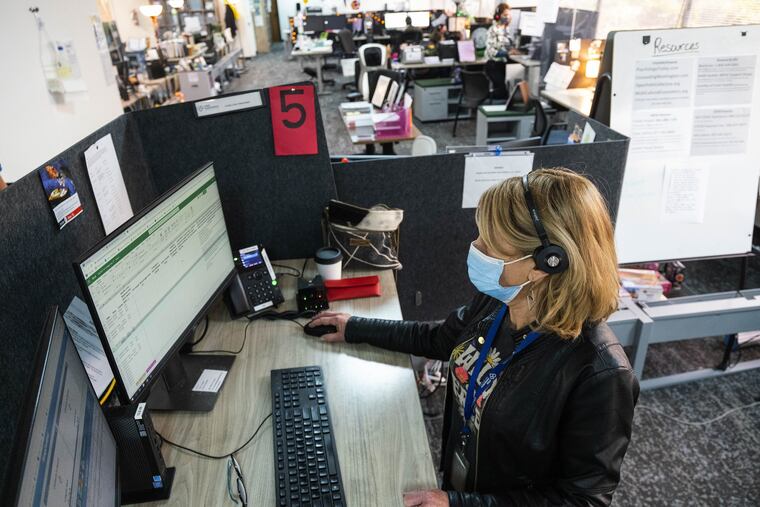Talking about suicide on college campuses may help save a life
Physically, emotionally, socially, and mentally, college is one of the most demanding times of a young person’s life. We don’t explicitly state this enough.

I’ll never forget something a student once told me when I first started my position as a care coordinator at Franklin & Marshall College.
They were referred to our care team during the spring semester when the student’s depression and anxiety debilitated them, almost unable to leave their dorm room. After a couple of missed appointments, the student finally showed, and I began by asking, “How are you? Are you doing OK?”
The student took one look at me and burst into tears. They told me it was the first time anyone had asked them how they were doing since they arrived on campus in the fall. We talked about their anxiety, their sadness, and their thoughts of ending their life as a result of the stress. As we talked, I could almost see a weight being lifted off their shoulders.
College campuses in September are full of high emotions. Students arrive feeling excited about meeting new friends, starting classes and sports, and engaging in extracurricular activities. But many students, both new and returning, harbor great nervousness, anxiety, and even dread. These feelings are normal, yet we must make sure that students struggling with the transition to campus life get the help and support they need.
Physically, emotionally, socially, and mentally, college is one of the most demanding times of a young person’s life. We don’t explicitly state this enough.
So many students and their families are caught off guard when things start falling apart. This plays out in a variety of ways. Some students want to take advantage of every opportunity and overcommit. They get involved with every club, volunteer for every event, and take on a lot of work hours. They burn the candle at both ends and, usually by November, the anxiety and stress start to feel debilitating.
Others arrive on campus and feel so overwhelmed they can’t even take a first step. They start to withdraw, even from friends and family. They stop attending classes and miss important assignments and meetings. No matter the source of stress and anxiety, we have to ensure that students know how to get support before the situation becomes untenable and dangerous.
Students face many pressures — to perform well, to adapt to new sets of norms and social systems, the loss of support networks (especially true for international students), and so many demands on their time — creating the “imperfect storm” in which suicidal thoughts percolate.
At the same time, a perfectly normal developmental stage is occurring, where students are expected to practice more autonomy and make decisions on their own. College could be the first time they embark on an intimate relationship, which often ends in heartbreak even amidst classes and other obligations. For many students, it’s also the time of life when those weird “quirks” and issues they experienced prior to college, such as occasional sleeplessness, significant test anxiety, or bouts of sadness, are transforming into a full-blown mental health diagnosis. According to the National Alliance on Mental Illness, 75% of all mental health diagnoses have presented themselves by age 24.
Many people find suicide uncomfortable and difficult to talk about, but it is a devastating reality that impacts everyone. We must talk about it.
“We must talk about it.”
Suicide is now the second leading cause of death for students aged 10-24. Females are twice as likely to attempt suicide than males. More Black students report suicide attempts than white students (9.8% compared with 6.1%, respectively). LGBTQ students are four times more likely than their peers to try ending their lives. When you know students for whom all of these identities intersect, it’s important to know they are at even higher risk of suicide.
Suicide is preventable, and help and support are available. If you are struggling with thoughts of suicide, please tell someone you trust and/or reach out for help from one of many resources available to you, including the new suicide prevention hotline, 988. Do it now — do not wait.
Telling someone is the first step.
If someone you know talks about suicide, encourage them to reach out to a professional or support organization. High-quality resources for students at risk include the American Foundation for Suicide Prevention, Mental Health Is Health, the JED Foundation, the Steve Fund (for students of color), and the Trevor Project (for LGBTQ students).
» READ MORE: Bad coaching, micromanaging, long hours: Why college athletes are so stressed
Don’t know how to start a difficult conversation? Resources are available such as Seize the Awkward. Want training on this topic? Schedule a Mental Health First Aid or QPR training to learn basic intervention strategies. We all should know the warning signs, risk factors, and how and where to reach out for help.
Most students are resilient and get through much of what college life throws at them, but too many carry the burden of suicidal thoughts in silence. One of the greatest myths about suicide is that talking about it will only increase the likelihood of someone taking their life. The truth is, by talking about it, we actually lift the weight off our shoulders, or someone else’s, and in so doing we might save a life.
Susan Knoll, licensed in clinical social work, is a nonclinical case manager and chair of the campus care team at Franklin & Marshall College.